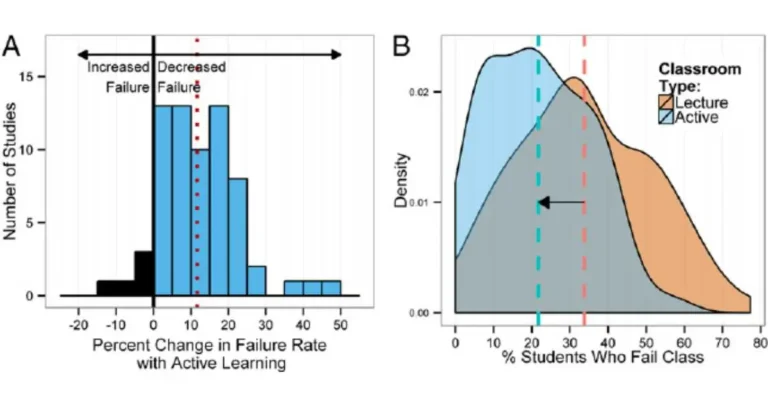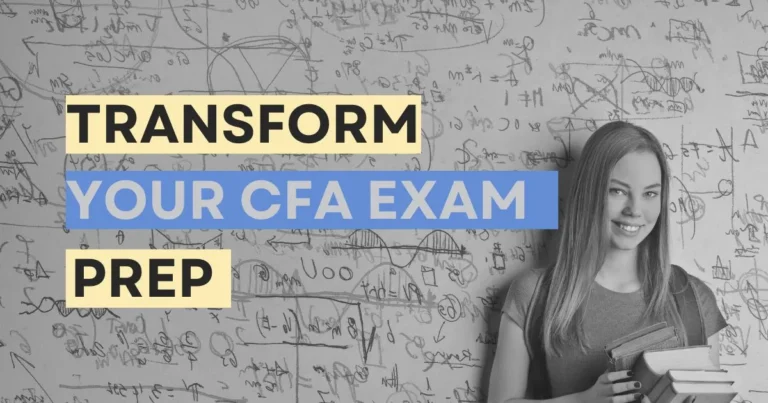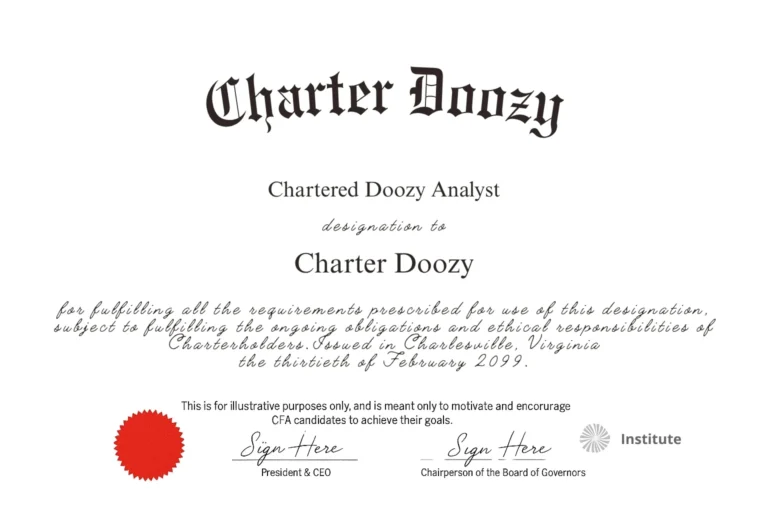Have you ever completed a CFA study session feeling relieved that you’ve covered a certain amount of material, but with a lingering sense of uncertainty about how well you’ve really understood the material?
You convince yourself that you’ve checked the box, but deep down you know there is little mastery of the topic.
Repeat this over a few days or weeks and it’s no wonder that many candidates have an underlying sense of anxiety about their progress.
If you are just going through the monotonous motions day after day, it’s only natural that your energy levels will be low and your heart not in it.
I see this with candidates all the time.
The first time we meet they will ask me things like “Am I studying the right way?”, “How can I be sure I’m ready for the exam?”, or “How do I keep myself motivated throughout the study period?”.
Underlying these questions is a lack of clarity and skepticism that the hours spent every day behind the desk are leading to any real progress.
Without the confidence that you are mastering the curriculum it is near impossible to stay engaged and to go ‘all in’.

The Case for Active Learning
The anecdote to this is known as Active Learning.
Active learning involves engaging with the material through activities that require critical thinking, problem-solving, and active participation.
Rather than being a passive passenger on your CFA journey, active learning emphasizes interaction, application, and reflection.
You’ll know when you are actively learning.
You’ll feel it in the marrow of your bones.
After an active learning session you should feel a strong sense of accomplishment.
Engaging directly with the material—whether through problem-solving, discussions, or teaching—gives a tangible sense of progress.
Active learning often provides immediate feedback.
This instant validation helps you identify strengths and areas needing improvement, making each session feel more productive and directed.
Active learning is also more stimulating and engaging.
It will leave you feeling energized and motivated.
Obviously there will be ups and downs, but the underlying trend should be up and to the right, as you make consistent progress towards your exam day.
The interactive nature of active learning keeps your mind alert and focused, preventing the drowsiness that often accompanies passive study methods.
The effect of all this is to boost your confidence in your understanding of the material and skills.
This confidence creates a positive reinforcement cycle which encourages continued effort and participation.

What Exactly is Active Learning
Preparing for the CFA exams is a rigorous and demanding affair. It requires a deep understanding of complex financial concepts and the ability to apply them under pressure.
Traditional study methods are often characterized by passive learning techniques such as reading textbooks, listening to lectures, or watching videos without interacting with the content.
These may not be sufficient to master the vast and intricate CFA curriculum.
Instead, active learning, a well-developed educational approach, offers a more effective and engaging way to prepare for these challenging exams.
Active learning involves instructional activities that engage students in meaningful tasks, prompting them to think critically and reflect on their learning process.
But this isn’t just my opinion.
The benefits of active learning are well-documented in academic literature.
For example, a meta-analysis by Freeman et al. (2014) examined 225 studies comparing active learning to traditional lecturing in STEM courses. The findings revealed that active learning significantly improved student performance, with higher exam scores and lower failure rates.
These advantages are not limited to STEM fields but extend to complex professional exams where the ability to apply knowledge is crucial, not unlike the CFA Program.

Michael Prince (2004) highlighted that active learning enhances retention, critical thinking, and student engagement.
For CFA candidates, this means that incorporating active learning techniques can lead to a deeper understanding of financial concepts, better recall during exams, and improved problem-solving skills.
Techniques such as practice problems, flashcards with spaced repetition, study group discussions, and teaching peers can transform the preparation process into a dynamic and effective learning experience.
Incorporating active learning strategies into CFA exam preparation can make a substantial difference.
By actively engaging with the material, CFA candidates can develop a more profound and lasting comprehension, ultimately leading to better performance on exam day. As research shows, shifting from passive to active learning can be the key to unlocking success in the CFA exams.
Doozy Digest
A newsletter for CFA candidates
Subscribe for:
✔ Insightful tips
✔ Expert advice
✔ Career motivation
✔ Exam inspiration
Stay updated and subscribe today!
Case Studies
I know what you’re thinking.
All this theory about active learning is good and well, but how do I apply this practically to my daily and weekly study schedule?
I already have more than enough work to do and now your suggesting I pile on more?
Below are 2 examples of candidates I’ve worked with in the past (names have been changed for privacy).
Both managed to successfully incorporate active learning practices into their CFA routines.
While everybody is different in their study preference, these examples should get you thinking, and give you some idea of what is practical and possible.
Sarah's CFA Level II Success
In 2021 I worked with Sarah, a credit analyst at a large bank, on her Level II exam.
This was her third attempt and she was naturally feeling demotivated and isolated.
The more her friends and family told her not to worry, the more worried she became.
I suggested incorporating an active learning technique into her study plans, but left the ball with her.
Through discussions with her old university friends, she found a local CFA study group which met up weekly for a Friday lunch to decompress, discuss agreed topics and to quiz each other.
Sarah volunteered to lead the sessions at several of these meetups.
She specifically selected the topics she found more boring to discuss with her peers.
This immediately had several benefits:
The group dynamic invigorated her, and gave an additional element which had been missing in her solitary study. This had the added benefit of energizing her and giving a boost ahead of her weekend study sessions.
Sarah was held accountable to study and review the topics she naturally would have avoided, procrastinated or de-prioritized.
She was able to make better use of her Friday afternoons, a time where work pressure relaxed a bit, but where she had historically been too tired to use for anything productive.
Obviously there was more to her success than only these sessions, but Sarah credits this group (and my help 😉) with playing a big part in her passing L2.
She also carried this practice over to L3 with great success!
Michael's CFA Journey
When I first met Michael he was working as a junior portfolio manager in London.
I had helped a colleague of his the year before, and he recommended Michael speak to me.
Michael had done well at university but was now struggling with his Level 1.
While he was struggling to balance work and study, his real complaint was the vast amount of material.
He was putting in the hours but found it challenging to retain the information.
We spent some time digging into his study approach at university and why his old ways were no longer proving useful.
Here is what he shared:
At university, his lecturers would provide pre-reading which gave him a chance to browse the material ahead of class.
The lecturer would then go through the material in class.
He then had weekly tutorials where he could do practice questions and ask for help where required.
Lastly, his courses had regular projects and tests to make sure the material was being digested properly before moving on.
What became clear to Michael was that the university provided a well-designed program for students to review work in spaced intervals, but also in different ways, to make sure the learning was stimulating and that students stayed actively engaged with the material.
Without the framework of a university he now had to create the structure for himself.
We began by re-engineering his study timetable.
Instead of approaching the curriculum like a novel to be read linearly, we decided to mix things up.
Every study session would begin with a quick 20 minute revision of the previous day’s work – focusing on speed of recall, and the key areas highlighted the day before.
He would also keep aside 5-10 questions aside from each section, and on a Saturday afternoon would dedicate time to doing this set of mixed exercises.
Lastly, he managed to convince his boss to get one morning each month off.
He would use this time to sit at a coffee shop (change of location), pull out all his notes from the full month and build mind maps to visually organize what he had studied and to connect concepts.
The shift to active learning techniques allowed Michael to cover the material in different ways and over time.
Michael is a bright guy and I’m sure would have come right eventually, but I like to think active learning played some part in his passing with a 90th percentile score.

Final Thoughts
If you would like to use active learning my suggestion is to start small. Find one or two simple things that can help make your learning more engaging. If it works you can build on this over time.
Here are some examples you might want to consider:
Practicing more problems questions
Create and use flashcards
Join a study group
Teaching others or even yourself out loud
Use the Cornell note-taking system
Engage in online discussion forums and communities
Gamify your learning
Keep a reflective study journal
Attend live or online interactive lectures and workshops, or
Find a CFA coach.

